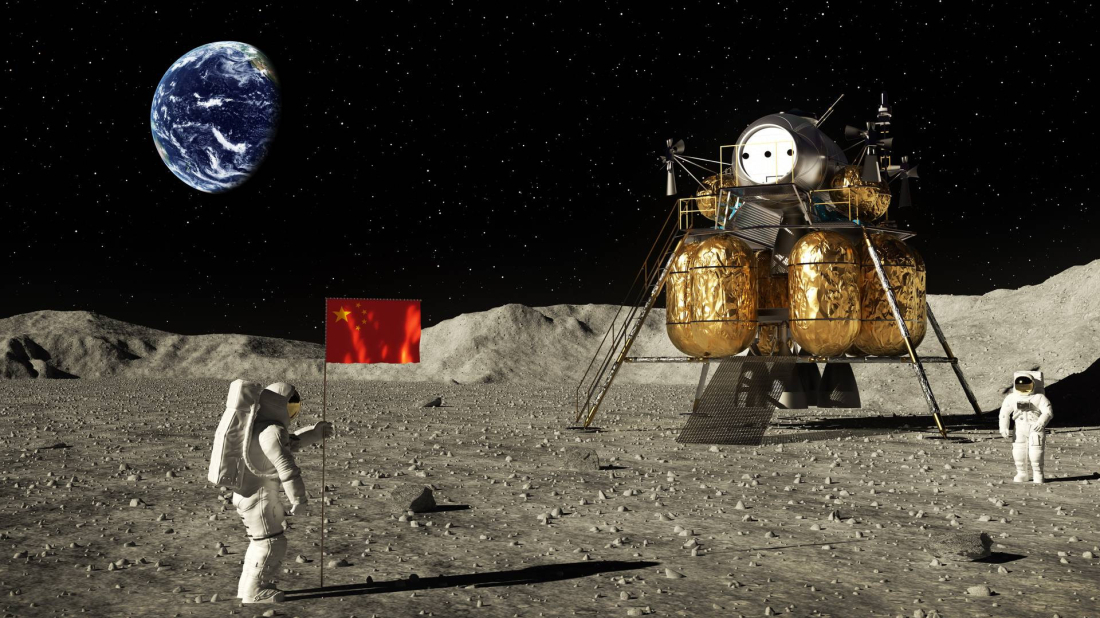Russia launches overnight drone attack on Odesa, injuring four people
Russia launched an overnight drone attack on Ukraine’s Odesa region, damaging residential buildings and infrastructure, and injuring four people, in...

China is advancing its lunar exploration efforts with the upcoming Chang'e-7 mission, which aims to investigate the Moon's south pole for water resources. A key component of this mission is a pioneering six - legged flying robot designed to explore shadowed craters that are challenging for traditional rovers to access.
The Chang'e-7 mission comprises an orbiter, a lander, a lunar rover, and the innovative flying detector. Upon landing, the rover, lander, and flying detector will work collaboratively to conduct comprehensive studies of the lunar surface and subsurface.
The flying robot, often referred to as a ‘hopper,’ is engineered to navigate the Moon's vacuum environment using a rocket propulsion system. Equipped with fuel tanks and thrusters, it can swiftly take off and land in various challenging lunar terrains. Its six - legged design ensures stability during landings on steep slopes, and it utilizes advanced leg trajectory planning and joint movement to traverse the lunar surface effectively.
This mission aligns with China's objectives of establishing a lunar research station and facilitating human missions to the Moon by 2030. By deploying the flying robot to explore previously inaccessible regions, China aims to gather critical data on potential ice deposits, which could be vital for future lunar habitation and resource utilization.
The Chang'e-7 mission is scheduled for launch in 2026, marking a significant milestone in China's lunar exploration program.
As international interest in lunar exploration intensifies, China's innovative approach with the Chang'e-7 mission underscores its commitment to advancing space science and technology. The deployment of the flying robot not only enhances the potential for significant scientific discoveries but also positions China as a formidable player in the new era of space exploration.
Protests in Iran over soaring prices and a plunging rial have spread to universities in Tehran, as students join shopkeepers and bazaar merchants in demanding government action. With inflation above 42% and the rial at record lows, unrest continues to grow across the country.
Roman Abramovich, the Russian billionaire and former Chelsea Football Club owner, has assembled a “top tier” legal team, including a former White House advisor, as he prepares for a legal battle in Jersey.
The head of Yemen’s Presidential Council, Rashad al-Alimi, has ordered all forces linked to the United Arab Emirates to leave Yemen within 24 hours.
Max Verstappen has been voted Formula 1’s driver of the year for a fifth straight season by team principals, despite narrowly missing out on the championship.
Syria’s permanent representative to the United Nations, Ibrahim Olabi, said Israel has occupied the Syrian Golan Heights for almost sixty years, and that the UN General Assembly this month once again reaffirmed Syria’s sovereignty over the region.
Russia launched an overnight drone attack on Ukraine’s Odesa region, damaging residential buildings and infrastructure, and injuring four people, including three children, according to regional authorities on Wednesday.
Thailand released 18 Cambodian soldiers on Wednesday, ending their 155-day detention. This comes after a ceasefire agreement between the two countries halted 20 days of fighting that killed over 100 people and displaced more than half a million. The soldiers were handed over at a border checkpoint.
Germany’s military planners warn that cyberattacks, sabotage, and disinformation could signal the start of a new war, according to a confidential government document seen by Politico. The plan outlines how Germany would defend itself in a major NATO conflict.
Organisers in New York have successfully completed a test run of the Times Square New Year’s Eve crystal ball, less than 48 hours before the annual countdown celebration.
Bulgaria is preparing to replace its national currency, the lev, with the euro on 1 January, a long-awaited move welcomed by businesses but viewed with scepticism and anger by some citizens.
You can download the AnewZ application from Play Store and the App Store.

What is your opinion on this topic?
Leave the first comment